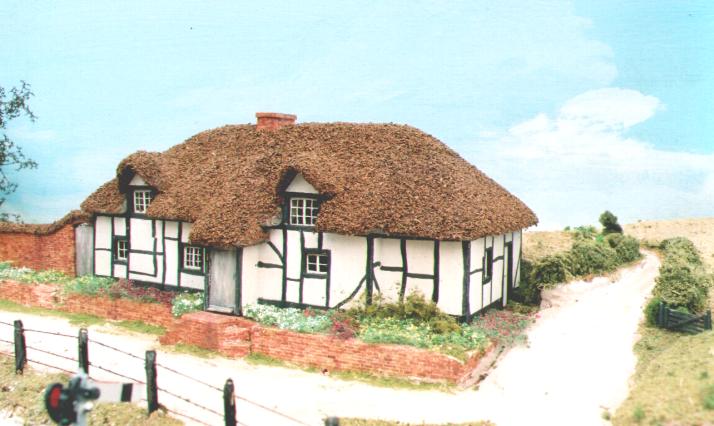 |
"The typically East Wilts thatched cottage long
pre-dated the railway
but seemed entirely unconcerned by its newer, noisier neighbour."
indent Despite the preponderance of local
stone, Wiltshire generally is a very happy hunting ground for old half-timbered cottages,
many of which either remain thatched or have been recently re-thatched. In the 30s
and 40s however, thatch would have been even more common since it remained a cheap roofing
material; a situation which didn't really change until modern farming methods removed the
main source of supply by producing wheat with much shorter stalks which were quite
unsuitable for roofing.
indent The model is based on one of several cottages in the
Eastern Limestone belt at Ablington, this one being dated 1665 and thus having a peaceful
existence for over 200 years before the arrival of the railway! (Not that Ablington
ever had a railway...) When built this would have been an example of the latest
technological advances of the day since it was only in the mid 1600s that timber became
particularly scarce (something to do with building ships, if I remember correctly...), and
so the size of scantlings used was dramatically reduced while the spacing between the
vertical timbers was dramatically increased compared with what it had been
previously. These give a very different appearance compared to earlier houses with
their heavy, closely-spaced timbers. Both however are examples of "Box Frame
Construction" which, in their turn, are quite unlike the "Cruck" cottages
so common just up the road in Pewsey and Lacock, both rightly famed for their
timber-framed buildings.
| Previous photograph in series | Back to "Upper Isis Room" entrance | Next photograph in series |